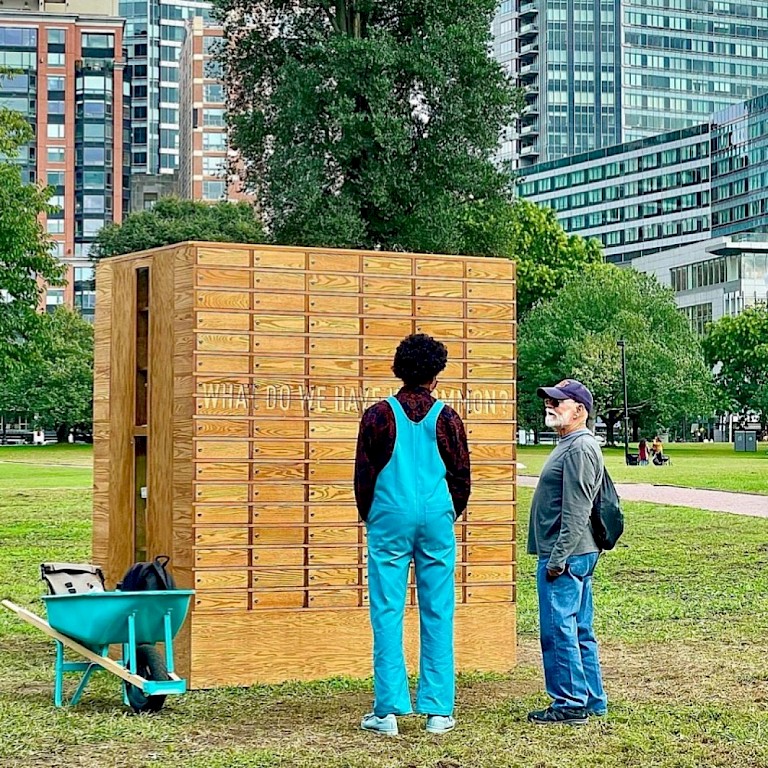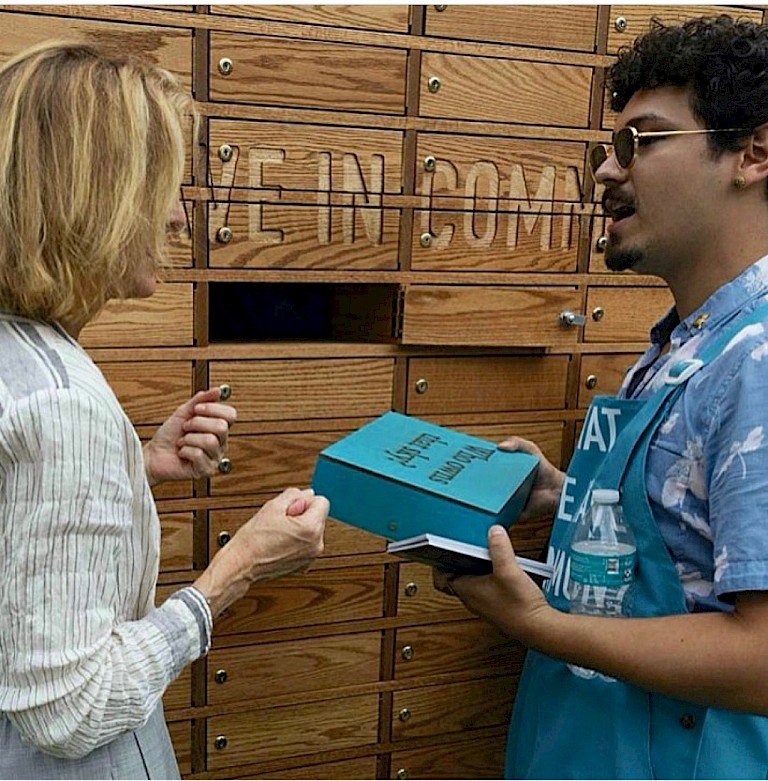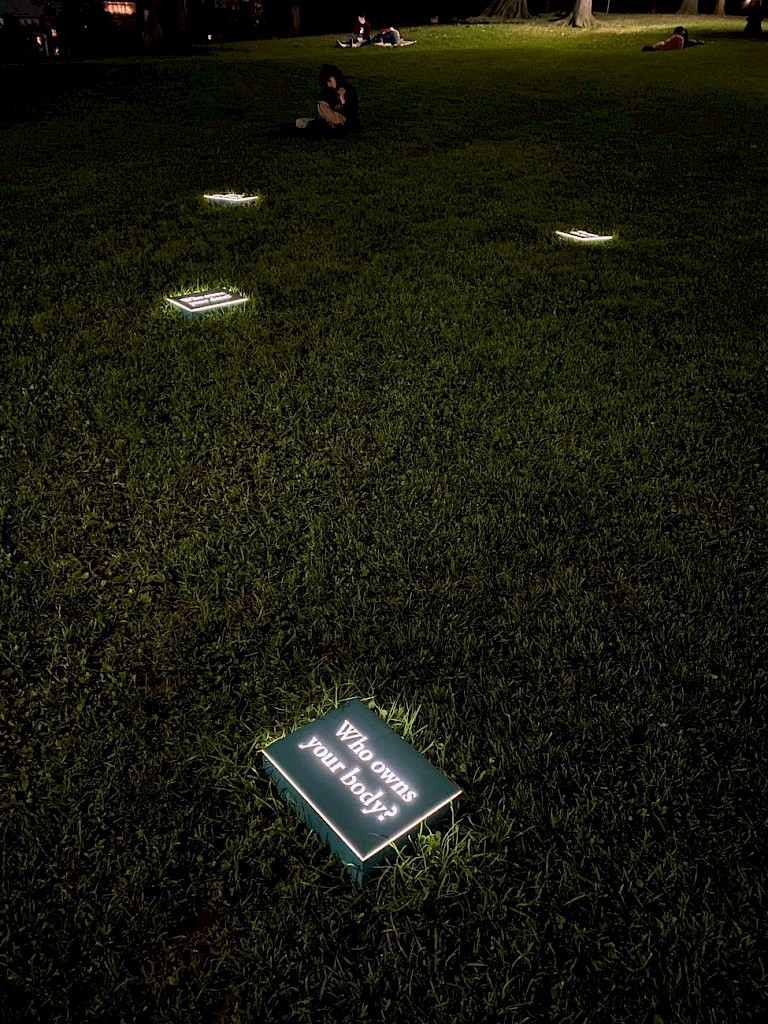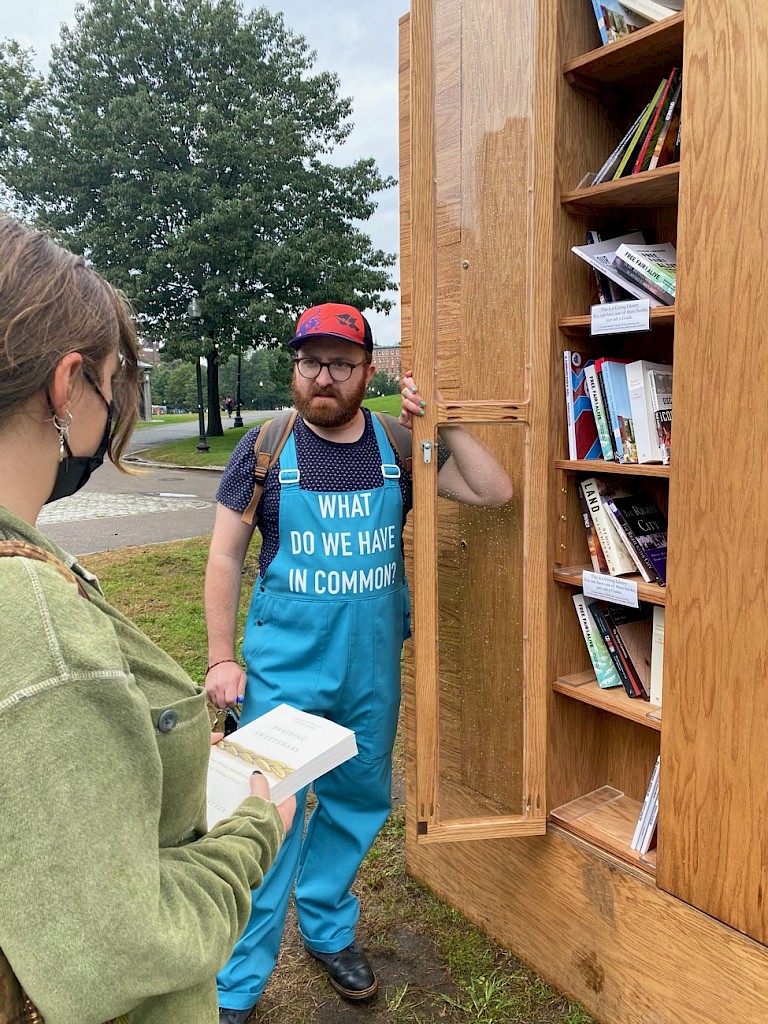



The Friends of the Public Garden commissioned the piece in celebration of their 50th anniversary, with a goal of reflecting on how we hold our public parks in common, and shining a light on what it means to care for them together as a community.
They hired local curators Now+There who contacted several artists and presented their work to the client. The client chose Janet Zweig. Zweig then visited, made presentations, met with Client board members several times, met with fundraisers, and developed a proposal. Once the proposal was accepted, Now+There did the production management in cooperation with the artist.
The client’s criteria also included: a dynamic and ever-changing piece, visible by day and night, conveying the layers of meaning of the park, and the park’s benefit to the public, and drawing attention to the labor that goes into the care of the Common-- the blue overalls were conceived as expressive of the act of caring for the greenspace.
The Friends of the Public Garden raised funding specifically to mount the project.
The artwork was a huge draw; people flocked to the area and to the many vendors and surrounding restaurants. The Boston Common has more vendors than any other park in the City.
The guides engaged with an estimated 3,500 people, and over 16,000 people viewed the art installation during the 32 days it was open.
32 boxes had questions in 7 languages that related to the local demographics.
There were a total of 12 guides, and 2 were available to engage the public daily from 10:00 am to 7:00 pm. The project was staffed for a total of 288 hours.
The grand opening attracted 5 civic leaders to welcome the art and the people, with over 200 attending the opening.
73 people used the QR code to access audio questions.
Over 140,000 people were reached via social media on Instagram, Twitter, and Facebook, and over 150 social posts included the project hashtag #InCommonBOS.
The artist worked with several experts on the commons and commoning including meetings with Jay Walljasper, author of All That We Share: A Field Guide to the Commons. The list of books in the Giving Library covers almost every academic and creative field. Those books were distributed to the public.
Janet Zweig is an artist who lives in Brooklyn, NY, working primarily in the public realm.
Recent commissions include a departure gate to fictional locations in the Austin Airport, a piece for West Sacramento that orients the viewer to the tidal river, a participatory temporary piece on the Boston Common, and a mechanical piece that tracks climate change at a library in San Diego. Earlier public works include a sentence-generating sculpture for an engineering school in Orlando, a system-wide interactive project for eleven Light Rail train stations in Minneapolis, incorporating the work of over a hundred Minnesotans, and a 1200 foot frieze in the Prince Street subway station in NY.
Her gallery sculpture from the 1990s generate language and are driven by computers and printers, marrying the analog and the digital. Some of her later public works continue this generative series.
Zweig’s sculptures and books have been exhibited widely in such places as the Brooklyn Museum of Art, Exit Art, PS1 Museum, the Walker Art Center, and Cooper Union. Awards include the Rome Prize Fellowship, NEA fellowships, and residencies at PS1 Museum and the MacDowell Colony. In 2019, she was the artist in residence with the New York City Mayor's Office of Climate and Sustainability. She teaches at the Rhode Island School of Design and Brown University.




